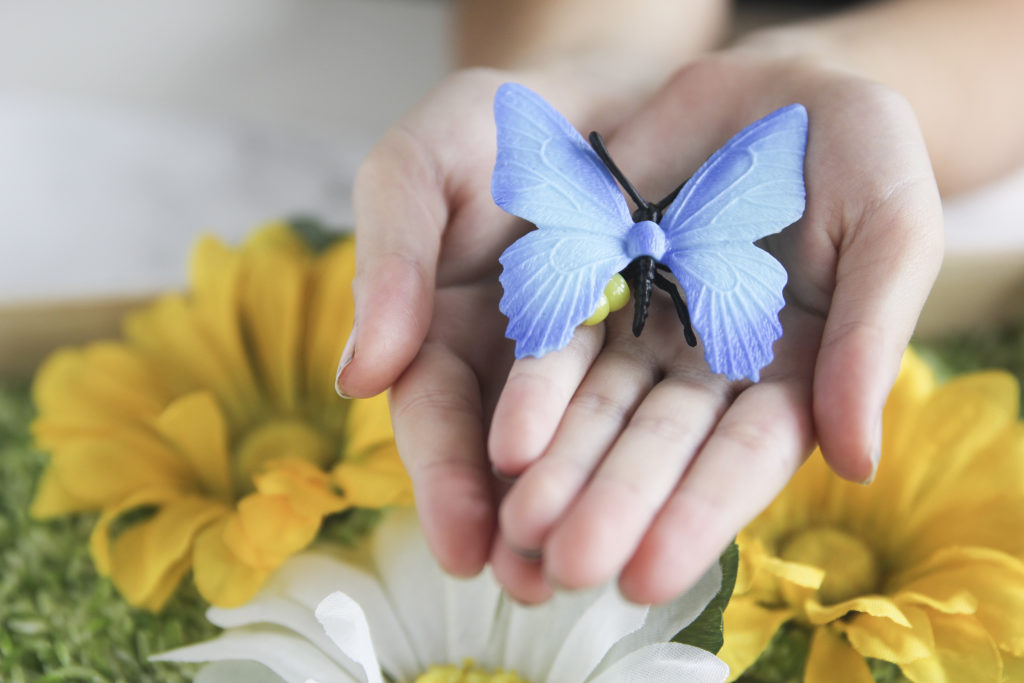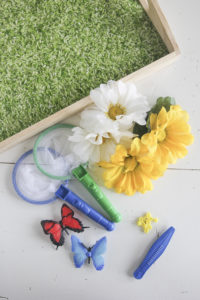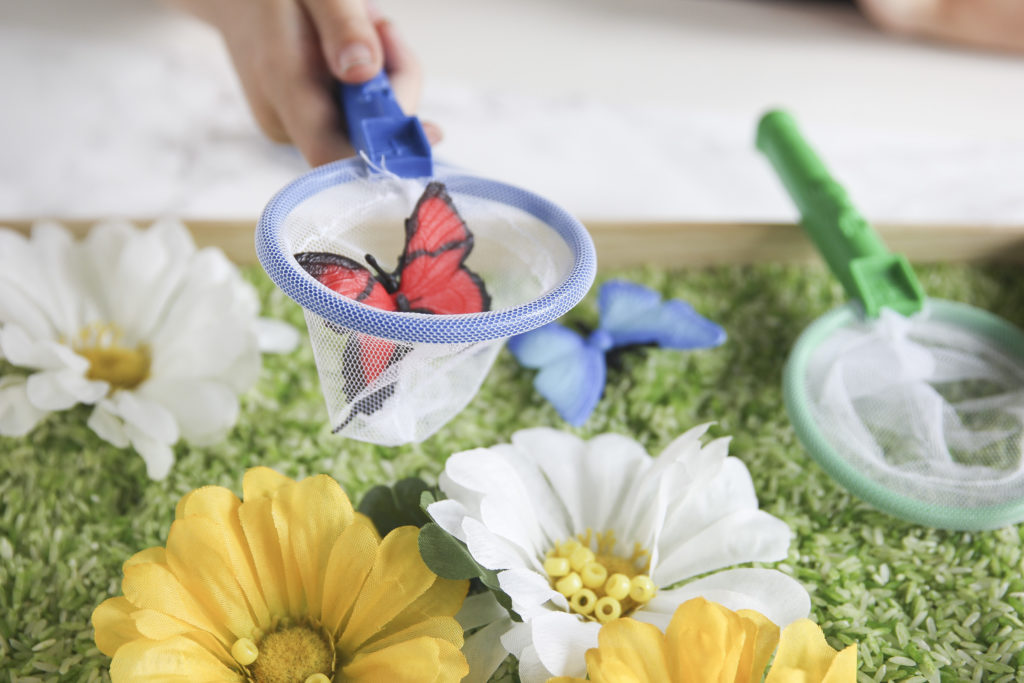This hands-on learning activity for little ones is fluttering fun

Activities that stimulate a child’s senses are important for the development of important skills, such as motor skills, social skills and even language, math and science skills. And this Butterfly Sensory Bin stimulates lots of senses—perfect for little hands and growing minds.
Picking up beads with tweezers and then threading them onto the butterflies, for example, helps build fine motor skills and hand-eye coordination.
Since there are so many ways to play with this sensory bin, it can grow right along with your child. With toddlers, you can talk about colors and the differences between textures. Older kids might be interested in learning more about butterflies and other insects and how pollination works.
This sensory bin is also a fun way for siblings to play together. Older brothers or sisters can play the teacher role, helping younger siblings explore tougher concepts.
Supplies for Butterfly Sensory Bin

- 2-pound bag of white rice
- Green food coloring
- Large plastic bag
- Baking sheet or casserole dish
- Bin or tray
- Artificial flowers
- Yellow beads
- Toy butterflies
- Butterfly net
- Tweezers
- Bin or tray
Instructions
First, we’re going to make “grass” for the butterflies to live on by dying white rice.
- Pour 2 pounds of white rice into a large plastic bag.
- Squeeze a generous amount of green food coloring over the rice.
- Seal the plastic bag, then shake and squeeze the rice until it’s all green.
- Pour the green rice onto a baking sheet or casserole dish, and set it out to air-dry overnight.
Note: Don’t skip step 4 or your little ones will end up with green fingers and clothes!
Now it’s time to assemble the butterfly bin.
- Pour the fully-dried green rice into a bin or tray.
- Arrange a few artificial flowers on top of the rice.
- Sprinkle a few yellow beads onto the centers of the flowers to make “pollen.”
- Place some butterflies around the flowers.
- Add tweezers and butterfly net to the bin.

You can also use the Butterfly Sensory Bin to teach your child about butterflies. Below are some fun facts about these beautiful flying insects as well as ways to explain them through play.
Q: What do butterflies eat?
A: Butterflies sip nectar from flowers using their tongues.
Demonstrate a butterfly landing on a flower and using its tongue like a straw to drink the sweet nectar.
Q: Where do butterflies sleep?
A: Butterflies can sleep just about anywhere.
Put your butterflies to bed somewhere in the bin, and then wake them up in the morning to play again.
Q: How do butterflies get around?
A: Butterflies can walk around on their six legs, but they love to use their wings to fly from flower to flower.
Pick up a butterfly and let it fly all around, landing on flowers along the way.
Learn how to make a colorful yarn wreath that’s perfect for spring.
Q: How many body parts do butterflies have?
A: Butterflies’ bodies have three major parts: a head, a thorax and an abdomen. They also have two eyes, two antennae, two wings and six legs.
Investigate a butterfly to find and count all these body parts.
Q: How do butterflies help flowers?
A: Butterflies are great pollinators. They pick up pollen as they drink from flowers, leaving some behind each time they land on a new flower.
Thread some yellow beads from the center of a flower onto a butterfly’s legs to demonstrate how it picks up pollen. Drop a few beads at the next flower, showing how pollination works.
Be sure to share pictures of your Butterfly Sensory Bin on social media with #washingtonfamilymag so we can see (and share!) your creativity!
Written by: Lindsay Ponta
This article originally appeared in our sister publication, Washington Family Magazine.




